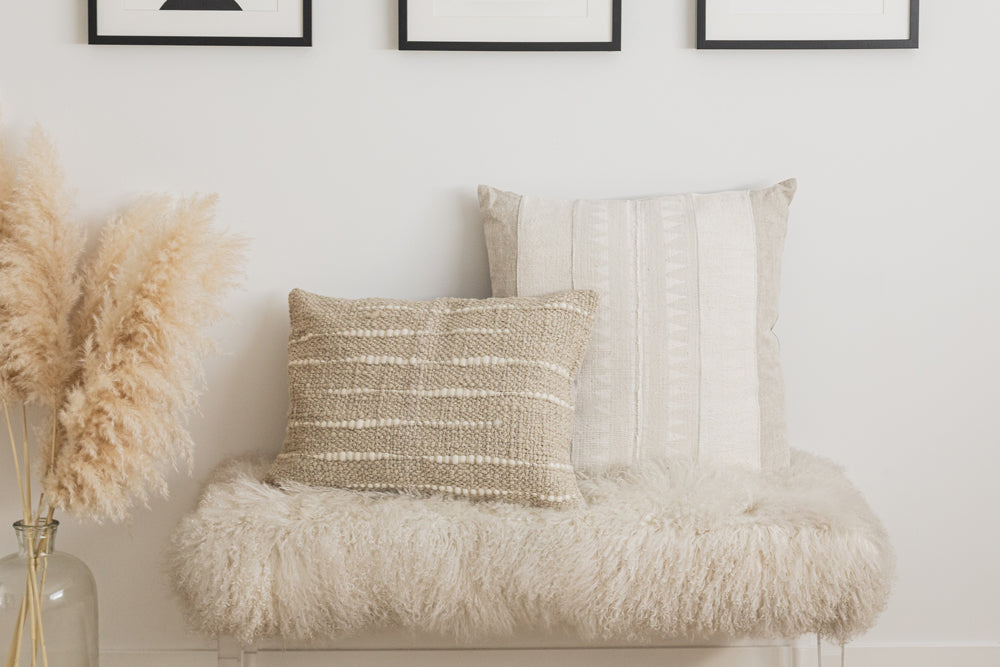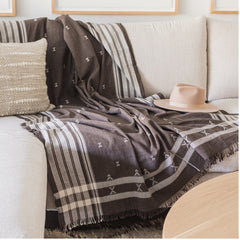
Synthetic Dyes vs. Natural Dyes for Textiles
By Leah Okrainsky
Color is a beautiful thing. In fact, this concept is infused into many of our languages. For example, the word 'red' in Russian, ‘krasnyj’, is related to the word ‘krasivyj’, meaning ‘beautiful’. Without color, our world would be dull and lifeless. Humans have used dyes from plants, tree bark, and insects for thousands of years to decorate pottery and textiles in order to bring life into them. Nowadays, everything we have in our homes is dyed in colors and patterns that are exciting and lively, but have you ever thought about how that’s even possible? Where do all these brilliant and spectacular shades come from? Well, you guessed it: petroleum. The problem is, it’s very difficult to get away from these synthetic dyes as they are now everywhere in the products we produce. So it is important to understand the history, process, and environmental effects of both natural and synthetic dyes so you can make the best design choice for your home and everyone in it.
Buying naturally dyed products supports local traditions and people that have been practicing their craft for generations. Creating textiles with natural dyes requires a significant amount of labor compared to synthetic dyes, so when you invest in such products, you are also investing in the livelihoods and traditions of expert artisans. Here are a couple of examples of eco-friendly companies and environmentally friendly products that you can invest in for your home that use natural dyes for their colors.
SIEN + CO.
Sien + Co. is an American women-owned company that sources fabrics from Nepali, Peruvian, and Argentinian artisans to create high-end home decor. They make everything from pillows, throws, rugs, and baskets. All of their pillows are hand-dyed and gorgeous! Check out some variations below:


STUDIO VARIOUSLY
Studio Variously is strongly focused on sustainability and preserving hand-crafted design. Their founder, Anjali Purohit, promotes ethical labor rights and production methods through the use of non-toxic materials and water conservation practices, sourcing materials from places like India, Australia, and Belgium. Studio Variously produces throws, pillows, rugs, and scarves that are unique and of exceptional quality.
All of their sustainable products have certifications that prove their sustainability and support women artisans. They also provide transparency around other aspects of each product that ensure that you are making a great choice for both your home, and the planet!

HOW NATURAL DYES ARE MADE
Some types of natural dyes for textiles are: substantive, adjective, and vat dyes.
-
Substantive dyes are materials full of something called “tannins”, and include things like avocado pits, onion skins, pomegranate, nuts, leaves, and branches. These tannins naturally contain “mordant”, which is necessary for achieving the binding between the fabric and the dye. The strength of the mordant affects the dye’s “color-fastness”, which describes the dye’s resistance to fading or bleeding. The more color-fast a material is, the stronger the bond between the dye and the textile.
-
Adjective dyes don’t contain any mordant, so they need some to be added. Some examples are madder root, alkanet, logwood, and flowers like marigold, tansy, goldenrod, hibiscus, and hollyhock.
-
Vat dyes, like indigo, need to go through a fermentation process to create the ability for the dye to adhere to fibers.
SYNTHETIC DYES
How are synthetic dyes made, and what effects do they have on humans and the environment? Synthetic dyes come from oil, which is a non-renewable resource. Synthetic dyes were still being produced from coal tar until about 30 years ago (Source). Extracting and burning coal is a major contributor to greenhouse gas emissions, and therefore climate change.
Why are petroleum-based synthetic dyes used more commonly in textile dyeing than natural dyes? Because it’s cheaper - monetarily - and companies often take the cheaper price without taking into full account the social and environmental costs. The negative consequences can be great, such as carbon emissions and toxic chemical waste from a manufacturing plant that are not paid for by the producer, but rather paid for dearly by the environment. For example, when modern synthetic dyes are produced, 10-15% of the dye does not adhere to the fabric and is released as effluents. Downstream the effects due to toxic chemical dumping can include health concerns for both humans and animals in that ecosystem, from drinking water and soil quality. Source
In full transparency, there are some issues that arise from using natural dyes on textiles as well. Using natural dyes is a labor-intensive process that involves heat and energy usage. The basic process consists of heating up the dye material in water in order to extract the dye essence and then submerging the material to be dyed, for as long as it takes for the material to achieve the desired amount of color. The use of chemical mordants, commonly used with natural dyes, produces effluents in the form of environmental waste to water sources. Moreover, a significant amount of water is used during the dyeing process. So, although plant-derived dyes are seen as more sustainable and environmentally friendly, one must remember that there are still elements of significant water waste and energy consumption necessary to produce such products. Still, natural dyes are preferred to synthetic dyes and processes are constantly improving.
It’s hard to escape the synthetic dyes that are all around us, but when you have the option, choose natural dyes to promote the use of renewable resources like plants, which, when managed properly, can actually improve soil quality and pull carbon back into the soil through a process called carbon sequestration. Buying eco-friendly products for the home, produced with natural dyes also supports artisans that use traditional methods of working with textiles that have been passed down through generations. As a consumer, you have the power to make a change in the world by supporting such businesses!

